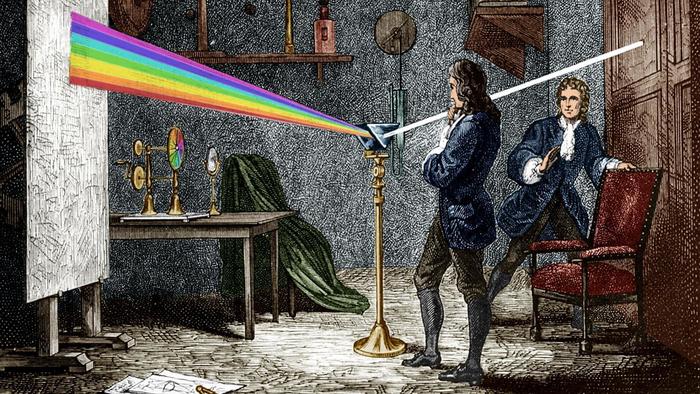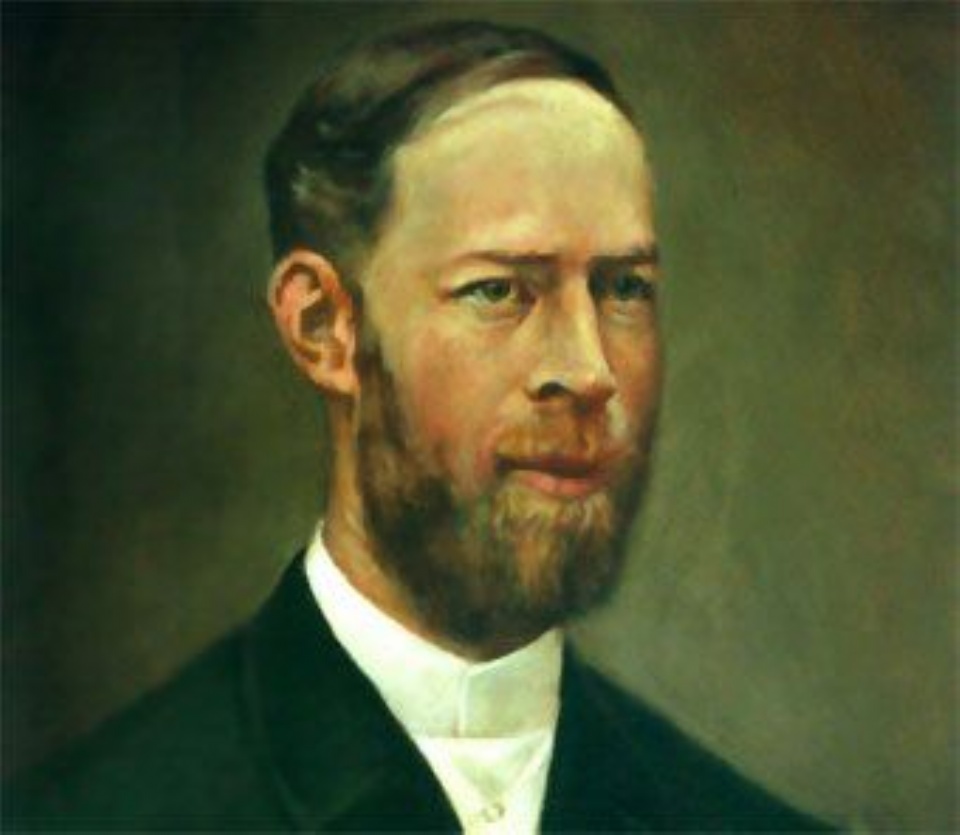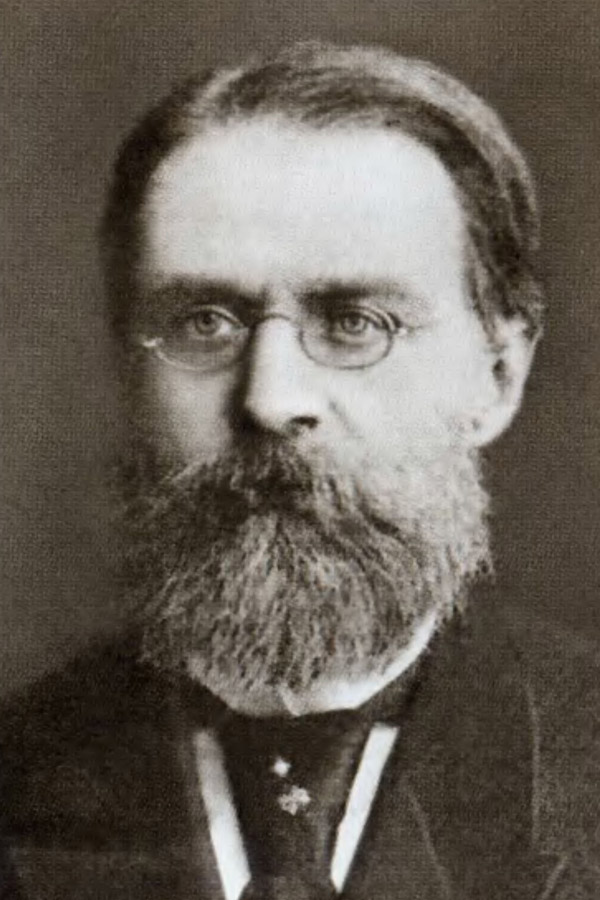Surely few people heard of Alexander Grigorievich Stoletov. Although this is a famous Russian physicist of his time, who made a huge contribution to the development of this science in the 19th century, in particular, his scientific works contributed to a better understanding of electromagnetic phenomena. In this article, we consider the laws of Stoletov for the photoelectric effect and what their physical meaning is.
The position of physics in the XVII-XIX centuries: disputes about the nature of light
Beginning in the 17th century, when Isaac Newton began conducting experiments with light, and ending in the 20th century, when physicists “penetrated” the structure of the atomic nucleus, disputes regarding the nature of electromagnetic radiation did not subside.

In XVII, Newton puts forward the so-called corpuscular theory, according to which, light is a collection of small particles, or corpuscles. Scientists around the world recognized this theory for the next one and a half centuries, until a number of experiments in the first half of the 19th century showed that it was incorrect (the Newtonian concept of "corpuscles" could not explain the observed phenomena of interference and diffraction). Subsequently, Maxwell received a harmonious system of equations that explained the propagation of electromagnetic radiation in terms of wave processes. Maxwell's theory was confirmed by the experiments of Faraday, as well as Hertz, who was able to measure the speed of propagation of these waves (it coincided with that for light).

It would seem that the Newtonian theory was finally buried, but one interesting event occurred: the same Hertz, an ardent supporter of Maxwell's theory and the wave nature of light, published an article in 1887 in which he spoke about the dependence of the intensity of the spark discharge between two spheres on the presence or absence of a source lighting. Hertz, without knowing it, discovered the phenomenon of the photoelectric effect, which was the beginning of the end of the existence of the wave nature of light.
Forgotten Russian scientist
After Hertz discovered the photoelectric effect, an active study of this phenomenon by various scientists from around the world begins. At the same time, scientists such as the Englishman Willoughby Smith are often called, who observed as early as the middle of the 19th century (before the experiments of Hertz) the amplification of the current in a selenium semiconductor when it was illuminated; as an American Charles Fritz, who is considered to be the creator of the first photovoltaic cell (a device for generating electrical energy thanks to sunlight); they also talk about Albert Einstein, who explained the phenomenon of the photoelectric effect, about Millikan, about Compton and others, but few remember Stoletov. Nevertheless, in 1888, it was Stoletov who discovered the law, which now bears his name.

Stoletov in the second half of the XIX century was one of the most famous physicists of the Russian Empire. He came from a family of traders, was educated at Moscow State University and in Germany. He was familiar and maintained relations with famous physicists of Europe at that time.
Stoletov's scientific works concerned the study of magnetism (hysteresis of the magnetization of iron with increasing magnetic field intensity), as well as the study of electrical processes in the presence of a light source (photoelectric effect in gases and solids).
Why few people know about Stoletov? The fact is that he was an opponent of the tsarist regime in the Russian Empire (he organized student strikes against tsarism, which he was repeatedly accused of), therefore for political reasons he was refused membership in the RAS, and his scientific works were practically not cited by Russian scientists end of the XIX century.
The experiences of Stoletov
We will directly examine the question of what Stoletov’s law is in physics.
In 1888 (some sources speak of 1872), the scientist conducted two interesting experiments:
- He took an air condenser consisting of a zinc plate and a metal grill. Through the grate he passed light from a mercury lamp. If the capacitor plates were closed in an electric circuit, and if the zinc plate was the cathode (negative electrode), and the lattice was an anode (positive electrode), then a galvanometer attached to the circuit recorded the presence of electric current. This current Stoletov called photoelectricity. When the scientist turned off the lamp or changed the polarity of the plates, the current in the circuit stopped.
- Charging an electroscope with a negative charge, and then irradiating its petals with light, the scientist observed that they began to fall, that is, the device lost its negative charge. Stoletov also conducted this experiment with a positively charged electroscope and did not find any effect.
These experiments were published by Stoletov in six different works.
Interpretation of the experiments and the laws of Stoletov
As a result of the above experiments, the scientist made several important conclusions.
Firstly, he found that light incident on metal surfaces causes the latter to lose a negative charge. How this happens and what this charge is, the scientist did not know (at the time of the experiments the electron had not yet been discovered, discovered by Thomson only in 1897). This position of Stoletov explained why the petals of a negatively charged electroscope fell, but not positive.
Secondly, the Russian scientist found that the intensity of the incident radiation and the strength of the electric current are directly proportional. Currently, this provision is the first law of the photoelectric effect, or the first law of Stoletov. The formula for it can be written as:
L = k * I.
Here L is the intensity of the light incident on the capacitor plate (cathode), I is the induced current strength, k is a certain proportionality coefficient, which depends on the nature of the cathode material.
Thirdly, Stoletov showed that the photoelectric current occurs instantly after turning on the light source. The delay time, which he estimated, does not exceed 0.001 seconds. Now this position is called the fourth law of the photoelectric effect.
Now, every student, if he is given the task: “Formulate the laws of Stoletov,” will be able to successfully solve it.
The essence of the photoelectric effect
To clearly understand what Stoletov discovered, we will briefly talk about the phenomenon of the photoelectric effect. By it is meant the pulling out of electrons from absolutely any material when electromagnetic radiation is incident on it with a frequency greater than a certain threshold value. This frequency is called the red border.
A theoretical explanation for this phenomenon was given by Albert Einstein, publishing the corresponding work in 1905. As you know, for this explanation he received the Nobel Prize.
To understand the essence of the processes occurring during the photoelectric effect, Einstein had to abandon the generally accepted wave theory of light and consider it in the form of a beam of quanta - photons. Based on the research of Max Planck, Einstein proved that each electron in an atom interacts with only one photon. If the energy of the latter is sufficient to tear the electron out of the material, then the photoelectric effect is observed.
The laws of the photoelectric effect
There are four of these laws:
- The first law of Stoletov, voiced above, is also the first for the photoelectric effect.
- The second law of this phenomenon states that for the occurrence of the phenomenon under consideration, a certain minimum photon frequency is required, less than which the photoelectric effect is not observed.
- The third law indicates that the kinetic energy of the pulled out electron depends only on the frequency of the photon, and not on their quantity (radiation intensity).
- Finally, the fourth position for this phenomenon, which lies in its instantaneous nature. In fact, this is the second law of Stoletov.
Other discoveries and inventions of Stoletov related to the photoelectric effect and the nature of light
In addition to the above-mentioned merits of our scientist in explaining the photoelectric effect, it should be noted that Stoletov was also able to measure the speed of light and constructed the first solar battery based on the phenomenon of an external photoelectric effect (according to some sources, the American Charles Fritz did this for the first time in 1884).
The importance of Stoletov’s discoveries
Of course, the influence of Stoletov’s work on physics at the end of the 19th century is enormous. After all, if we take into account that during the experiments of the scientist the world scientific community lived without an existing concept of electron and taking into account the ideas of the wave theory of electromagnetism, we can safely say that Stoletov became one of the founders of the quantum theory of light, and his work contributed to the discovery of the electron by Thomson.